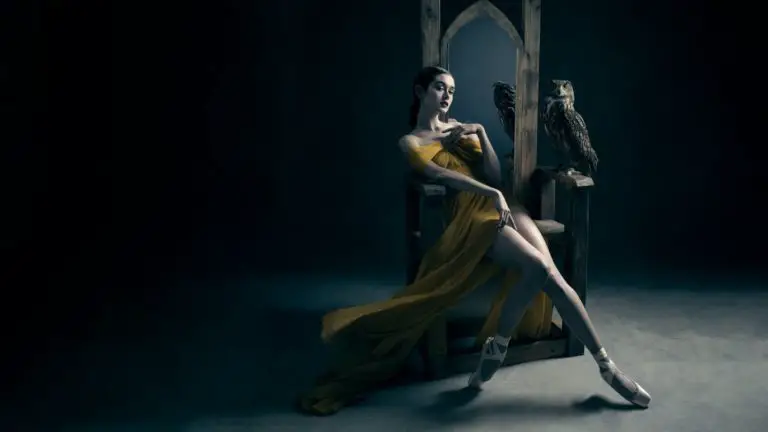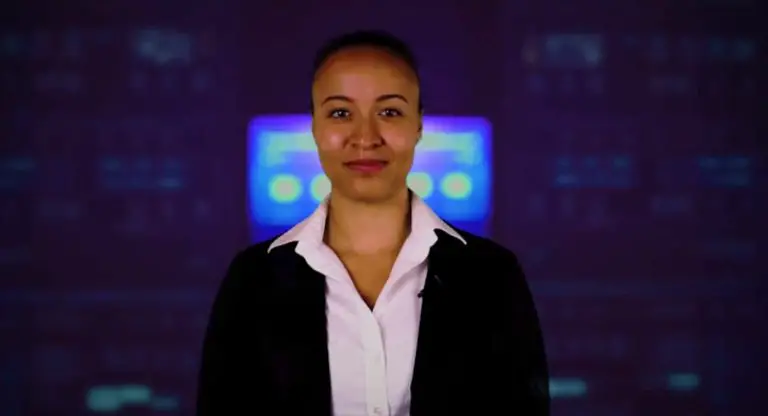Below is our review of the Cowboy Elektra workshop production by Rogue Artists Ensemble. Elements will likely change before the full show premieres.
The scraping of the violin bow across the saw’s edge creates a mournful wail as the puppeteers float a hat, trousers, and bloodstained shirt into place. It is the ghost of Oren, Elektra’s brother, come to demand that she take up his knife and bring frontier justice to their murderess mother Nessie. The girl in white is startled by the hat and shirt moving on their own, then visibly conflicted by her dead brother’s demands. Will she take vengeance for her beloved father, or forgive her mother now that she knows the full story?
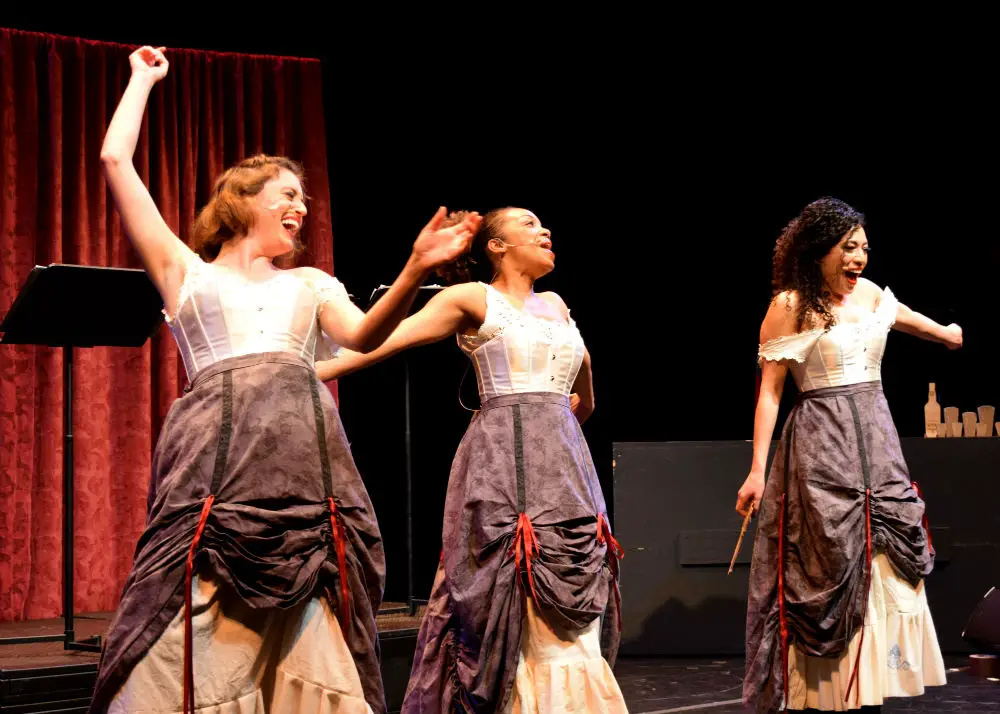 The Cowboy Elektra workshop is the latest offering from L.A.-based theater company Rogue Artists Ensemble (creators of Señor Plummer’s Final Fiesta and Wood Boy Dog Fish), which just completed a short workshop run at the Getty Villa. Though its current form is mostly proscenium musical theater with some impressive puppetry, the playbill for the Cowboy Elektra workshop implies the full release may include site-specific and/or immersive elements. Cowboy Elektra adapts the Ancient Greek tragedy, Elektra by Aeschylus, trading Mycenae for the Wild West, and shifts the focus away from Agamemnon and Orestes (renamed Auggie and Oren here) over to the women of the trilogy: Clytemnestra (Nessie), Cassandra, the Furies (Minnie, Molly, and Dirty Alice), and the titular Elektra. What starts pretty squarely in pantomime territory – cheery tunes, slapstick comedy, exaggerated gestures and enunciation – gradually becomes more somber and supernatural in flavor, ending with a truly surreal climax and a hopeful note of reconciliation. Performed for a large audience, the workshopped version of the show runs for approximately 90 minutes and does not include an intermission.
The Cowboy Elektra workshop is the latest offering from L.A.-based theater company Rogue Artists Ensemble (creators of Señor Plummer’s Final Fiesta and Wood Boy Dog Fish), which just completed a short workshop run at the Getty Villa. Though its current form is mostly proscenium musical theater with some impressive puppetry, the playbill for the Cowboy Elektra workshop implies the full release may include site-specific and/or immersive elements. Cowboy Elektra adapts the Ancient Greek tragedy, Elektra by Aeschylus, trading Mycenae for the Wild West, and shifts the focus away from Agamemnon and Orestes (renamed Auggie and Oren here) over to the women of the trilogy: Clytemnestra (Nessie), Cassandra, the Furies (Minnie, Molly, and Dirty Alice), and the titular Elektra. What starts pretty squarely in pantomime territory – cheery tunes, slapstick comedy, exaggerated gestures and enunciation – gradually becomes more somber and supernatural in flavor, ending with a truly surreal climax and a hopeful note of reconciliation. Performed for a large audience, the workshopped version of the show runs for approximately 90 minutes and does not include an intermission.
In terms of structure, Cowboy Elektra is split into two acts of about equal length. Before each, Minnie, Molly, and Dirty Alice give a brief introduction which frames each act as a play-within-a-play. The first act is positioned as a more family-friendly matinee, while the second is the darker, more adult evening show.
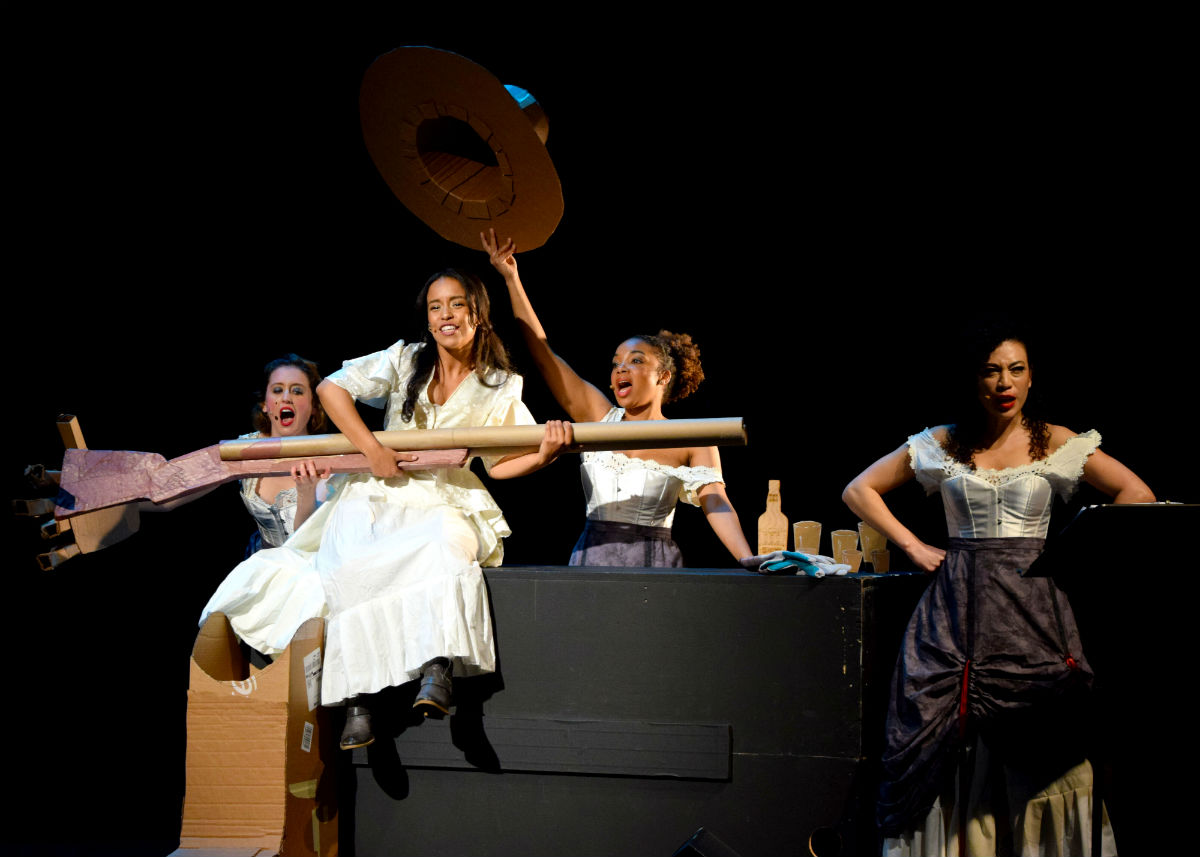 The story takes place almost exclusively in The Palace, Nessie’s home that she has transformed into a saloon/brothel where she lives with Elektra and her deceased husband’s mistress, Cassandra. There she employs Minnie, Molly, and Dirty Alice as… ahem… service staff with the audience standing in for their patrons. Nessie faces a reckoning from her children for murdering their father, who died with an ocean of Native American blood on his hands, and sacrificing his and Nessie’s youngest daughter, Iphigenia, to the outlaw Murrietta Boys (standing in for Artemis).
The story takes place almost exclusively in The Palace, Nessie’s home that she has transformed into a saloon/brothel where she lives with Elektra and her deceased husband’s mistress, Cassandra. There she employs Minnie, Molly, and Dirty Alice as… ahem… service staff with the audience standing in for their patrons. Nessie faces a reckoning from her children for murdering their father, who died with an ocean of Native American blood on his hands, and sacrificing his and Nessie’s youngest daughter, Iphigenia, to the outlaw Murrietta Boys (standing in for Artemis).
As with the original tragedy, the themes of vengeance and punishment for past transgressions run deep here. Murder begets murder all the way down, beginning with one of Augie’s ancestors killing and eating his own child, and ending with Augie and two of his children dead, the third pushed by wrathful spirits to kill her mother and perpetuate the family curse. The audience, and all of the characters besides Elektra, are powerless to stop this cycle of violence.
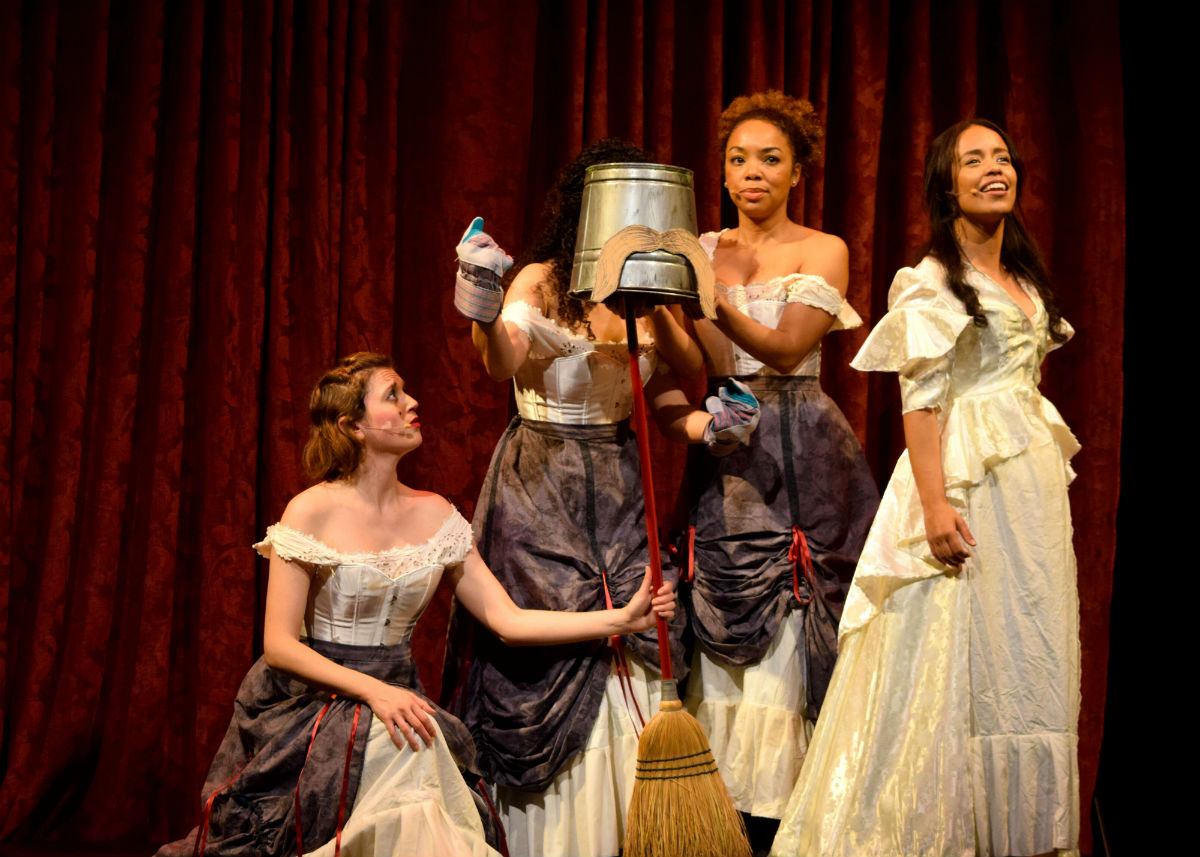 Elektra also struggles for independence and self-realization. She chafes under Nessie’s smothering (in her eyes) protectiveness, and is forced to question whether her blind loyalty to and adoration of her dead father and brother are truly warranted. We are shown from the beginning that Elektra is desperate for some measure of freedom, but Nessie’s deep-seated need to keep her one remaining child safe makes her unwilling to budge. Elektra is blinded by love for her deceased father, seeing him as an ideal parent and a paragon of justice and refuses to hear otherwise. Even when she is told point blank about how he slaughtered Cassandra’s family and then took her as his mistress, Elektra falls back on lines like, “He had no choice,” or even “That’s your truth, mine is that he was a good man and he loved me.” Her struggle to become her own woman is ultimately what drives the plot forward and determines how the story ends.
Elektra also struggles for independence and self-realization. She chafes under Nessie’s smothering (in her eyes) protectiveness, and is forced to question whether her blind loyalty to and adoration of her dead father and brother are truly warranted. We are shown from the beginning that Elektra is desperate for some measure of freedom, but Nessie’s deep-seated need to keep her one remaining child safe makes her unwilling to budge. Elektra is blinded by love for her deceased father, seeing him as an ideal parent and a paragon of justice and refuses to hear otherwise. Even when she is told point blank about how he slaughtered Cassandra’s family and then took her as his mistress, Elektra falls back on lines like, “He had no choice,” or even “That’s your truth, mine is that he was a good man and he loved me.” Her struggle to become her own woman is ultimately what drives the plot forward and determines how the story ends.
The sins of the father hang heavily over Elektra’s story. Auggie’s side of the family bears a curse born of a male ancestor’s truly vile misdeed – one which systematically claims the lives of all who carry his blood, save Elektra. It falls on her to decide whether to break or continue the cycle of familial murder, to accept her destiny or rebel against it. We see her struggle with how to proceed when she accepts the truth about her father and family history, and balk when spirits first demand, then force her to take up her brother’s blade. Her final choice is whether to succumb to her father’s tainted legacy or make her own fate.
 In truth, one could argue that Cowboy Elektra’s plot is a decidedly feminist critique of both the Wild West era and traditional patriarchal gender roles. It forcefully lampshades both the tendency of U.S. storytelling to rely on ignorant portrayals of Native Americans and to sugar-coat their genocide behind innocuous terminology. It’s also an almost completely female-centric reimagining of the tragedy; it renders the original trilogy’s – the Orestia‘s – principal male characters dead or missing from the outset to focus on the tension between Nessie, Elektra, and Cassandra. There’s a strong argument that this is all fair game, especially since even in the original material, the transgressions of the male characters and their consequences are a core part of the story.
In truth, one could argue that Cowboy Elektra’s plot is a decidedly feminist critique of both the Wild West era and traditional patriarchal gender roles. It forcefully lampshades both the tendency of U.S. storytelling to rely on ignorant portrayals of Native Americans and to sugar-coat their genocide behind innocuous terminology. It’s also an almost completely female-centric reimagining of the tragedy; it renders the original trilogy’s – the Orestia‘s – principal male characters dead or missing from the outset to focus on the tension between Nessie, Elektra, and Cassandra. There’s a strong argument that this is all fair game, especially since even in the original material, the transgressions of the male characters and their consequences are a core part of the story.
Rogue Artists Ensemble’s puppetry skills are commendable. Even in this early version, the Cowboy Elektra workshop boasts a decent number of well-made props in the second half. The handling of Oren’s ghost is particularly impressive, using black costumes on the puppeteers and well-lit props to focus attention on the “floating” shirt, pants, and hat. The separate garments move as if they were one person, cementing the illusion that they are inhabited by Oren’s invisible spectre. The costuming bears recognition, too; both the cast and the on-stage live band are clad in period attire that helps reinforce the Wild West setting. Changes in lighting are also used to good effect when setting the mood for a scene – bright in the first half to make it feel like a saloon, softer blues for flashbacks, and spotlight-only for when it’s an especially dramatic scene.
 The performers, too, are all solid. Finding (or training) a cast in which everyone can sing, dance, or use a puppet is impressive, and choreographer Nate Hodges also earns a shout-out for some of the more intricate, movement-heavy scenes. But Ariella Amar as Elektra deserves singling out for the range she demonstrates in the role. She effectively conveys Elektra’s growth and shifts in emotions throughout, even managing to take her singing voice back to about fifth grade – childlike and perhaps a little off-key, in contrast to her much stronger and polished grown-up voice – in one flashback scene to Elektra’s childhood.
The performers, too, are all solid. Finding (or training) a cast in which everyone can sing, dance, or use a puppet is impressive, and choreographer Nate Hodges also earns a shout-out for some of the more intricate, movement-heavy scenes. But Ariella Amar as Elektra deserves singling out for the range she demonstrates in the role. She effectively conveys Elektra’s growth and shifts in emotions throughout, even managing to take her singing voice back to about fifth grade – childlike and perhaps a little off-key, in contrast to her much stronger and polished grown-up voice – in one flashback scene to Elektra’s childhood.
The Cowboy Elektra workshop has some real potential but will benefit from fine-tuning and the addition of the immersive elements the show’s creators mentioned. It does drag a bit in the middle; the bigger struggle and strain on immersion comes from how the tone shifts without much setup or explanation in the second half. While the first half is introduced as the relatively tame matinee and the second as the more adult late show, this doesn’t really do enough to explain why supernatural elements are absent in one part of the show, but figure prominently in the other.
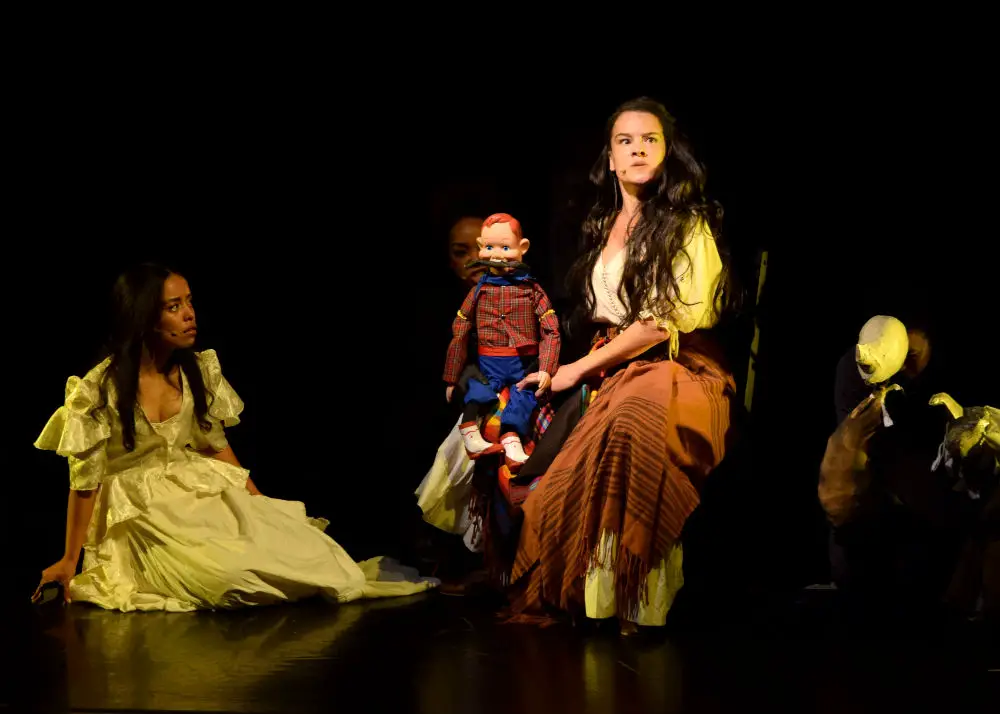 The net effect is, as one fellow attendee put it, that the first half is cowboy, and the second half is Elektra. More should probably be done to prep audiences for this tonal shift. Perhaps the final product will use a change in sets and a bit more setup to nudge the audience’s expectations into the right space for the drastically different feel of the show’s two parts, or make the transition a bit more gradual and justified within the plot.
The net effect is, as one fellow attendee put it, that the first half is cowboy, and the second half is Elektra. More should probably be done to prep audiences for this tonal shift. Perhaps the final product will use a change in sets and a bit more setup to nudge the audience’s expectations into the right space for the drastically different feel of the show’s two parts, or make the transition a bit more gradual and justified within the plot.
That said, I would keep an eye on this one. Even in its unfinished state, the Cowboy Elektra workshop offers some great performances (and puppets) in an interesting blend of Western and Ancient Greek fable that should only improve as the show is further refined. Cowboy Elektra’s innovation and creativity in the workshop stage bodes well for the final production.
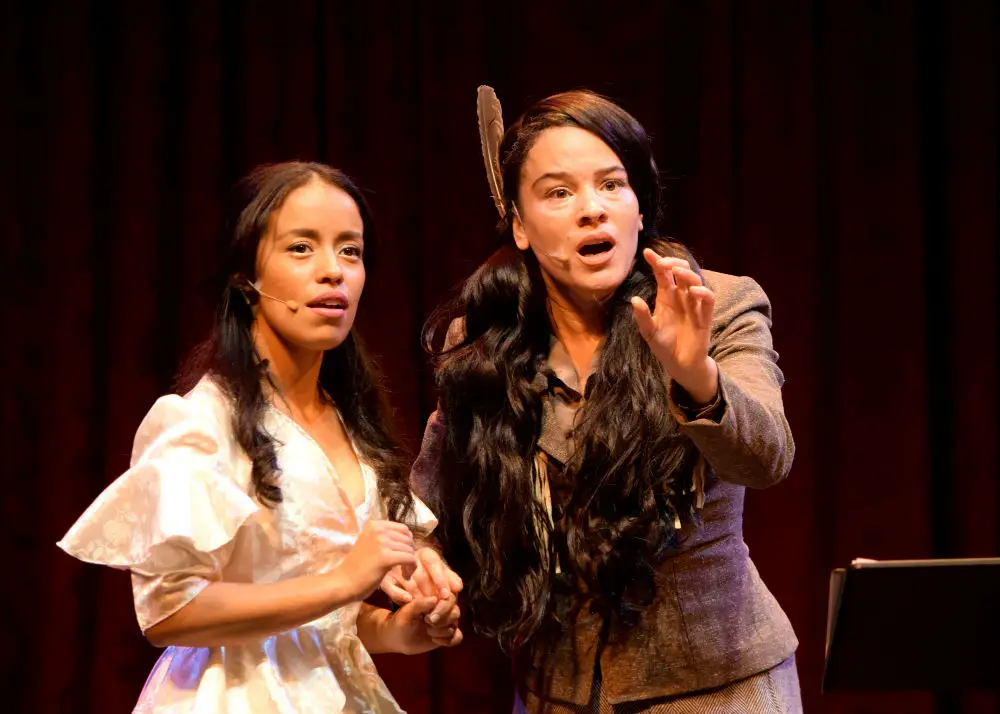 The Cowboy Elektra workshop has concluded its run. For more information on Rogue Artists Ensemble and their upcoming shows, see their website, Twitter, Instagram, and Facebook page.
The Cowboy Elektra workshop has concluded its run. For more information on Rogue Artists Ensemble and their upcoming shows, see their website, Twitter, Instagram, and Facebook page.

